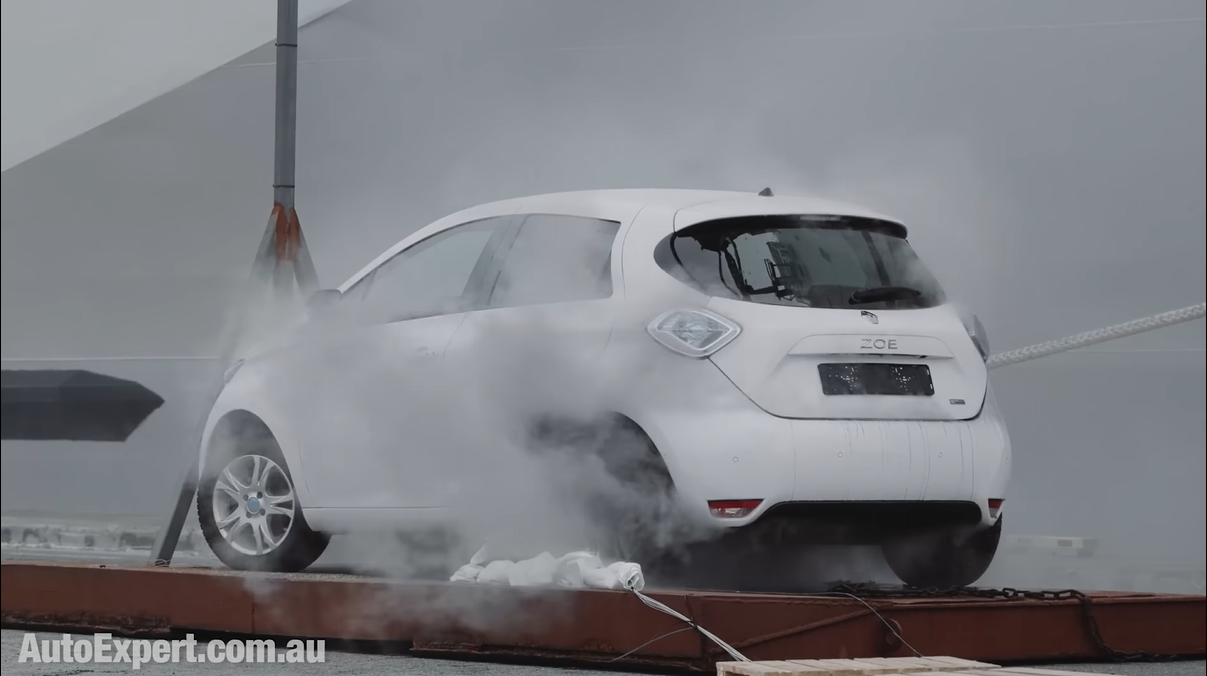Science -Vs- Lithium-ion batteries: EV firefighting, your questions and feedback
Mankind may have dived eagerly into the murky waters of mass electric vehicle adoption, without adequate fire fighting systems in place, but thanks to a Danish engineering kickstart, solutions are just around the corner. Here’s one such example…
I recently reported on Denmark having deployed an electric vehicle firefighting solution for the context of shipping and ferry transportation, which has genuine potential for widespread adoption.
With the increase of electric vehicle adoption in our cities and dense urban population centres, finding a suitable and effective fire fighting solution is an imperative being left up to the people to solve thanks to a vacuum of regulatory and political forethought on a global scale, seemingly.
I’ve recently reported on Why lithium-battery fires prove we’re not ready for mass EVs in our cities >> and demonstrated how important it is that EV fire fighting gets solved before people die >>.
The case in the UK where Luton Airport carpark was destroyed is yet another case in point where mass damage and potential loss of life demands that proper engineering-based solutions are found.
This report is to show how this Danish EV fire fighting system works in summary, but you can watch my original report here:
This Danish EV fire fighting technique uses a super-cooled high concentration brine solution on a car carrying ferry.
In their practical demonstration, a normal 1100-volt heating element was used to initiate the thermal runaway, which in the video, fire technicians have already installed inside the car’s battery pack, with a two-minute delay from the fire alarm sounding until the drencher systems initiate. Firefighters were already in their full PPE during the demonstration because obviously this was just a drill.
The rear window is broken first to release potential pressure, and so the spraying unit can be inserted and then the brine is released.
After an hour, the demonstration is complete and the situation is contained.
Essentially the brine can be refrigerated on board the vessel to roughly -19 or - 20° Celcius without freezing because salt water is such an excellent option for this application. They've got 16,000 litres of this chilly brine on board the vessel ready to deploy while thermal cameras monitor the electric vehicles which are parked in a designated EV area of the car deck.
If some recalcitrant EV starts to make like the Hal 9000 from 2001: A Space Odyssey and, worse than refusing to open the pod bay doors, it goes into a thermal runway state, the onboard firefighting crew gets alerted and administers an extremely cold salt waterer enema to the offending vehicle.
The fire goes out and none of the firefighters need to stand back while a single EV burns at 5000 degrees Celsius, sets fire every other vehicle, melts the steel in the ferry and sinks the entire multi-million dollar vessel and risks killing the crew or passengers in the middle of the North Sea or something.
And they even did the demonstration of this system at a port right next to the ferry, putting a real Renault Zoe EV to death in a properly ritualistic way.
If you want to understand exactly why this chilly brine system works so effectively, watch the full video above, or check out Why EV fires are so hard to fight >> and why nobody wants to talk about EV fire smoke >>
If you need assistance getting your hands on a sexy, zippy brand new fully-electric or plug-in hybrid vehicle fill in the form below and we’ll get back to you ASAP…

















The Hyundai Palisade is a big, comfortable holiday machine for growing families and offers excellent value, generous 8-seat SUV space, and practicality on par with LandCruiser - but it’s $30K more affordable.